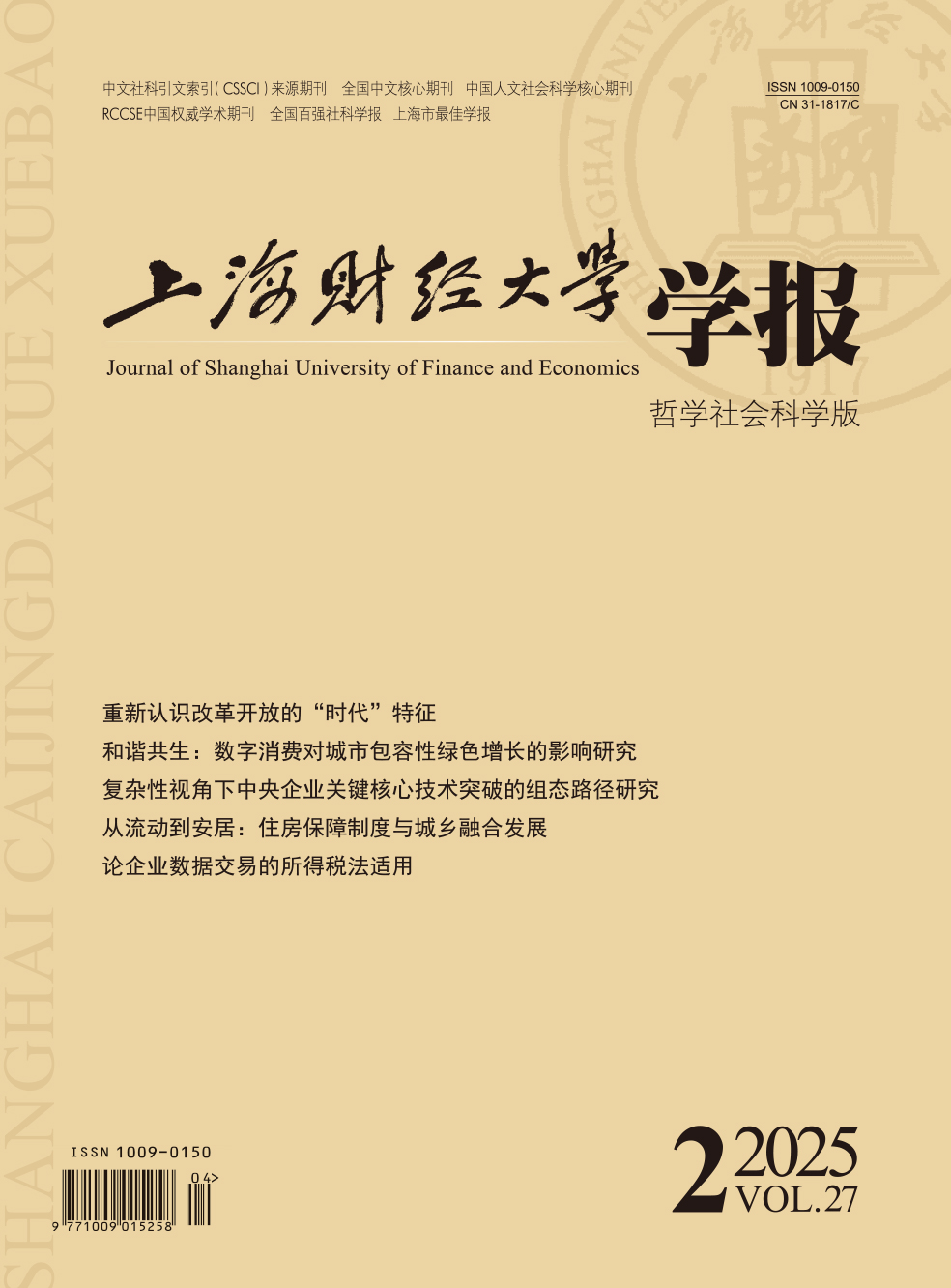根据“信息隐藏说”,公司与投资者之间信息不对称的极端经济后果便是股价崩盘,分析师作为资本市场的重要信息中介对股价崩盘风险将有何种反应。分析师关注是一切分析师行为的逻辑起点,文章从该视角出发选取2005-2016年中国A股上市公司为样本,实证检验了股价崩盘风险对分析师关注的影响。研究发现,当公司股价崩盘风险越高时,越会吸引更多的分析师跟踪报道,表明分析师在选择跟踪目标时会考虑股价崩盘风险的因素。进一步地,文章对股价崩盘风险影响分析师关注的内在机理进行了探讨,发现股价崩盘风险通过投资者信息需求这条路径影响分析师的关注水平。最后,截面分组检验还发现在投资者分歧度越大、投资者情绪越高涨、机构投资者的持股比例越高的组中,股价崩盘风险对分析师关注的正向影响更显著。文章在丰富股价崩盘风险微观层面经济后果以及分析师关注影响因素相关领域文献的同时,也为监管部门尽快建立奖惩机制,以鼓励分析师更好地扮演信息中介与外部治理的角色来保护投资者权益提供了可行性依据。
股价崩盘风险与分析师关注:“趋之若鹜”还是“退避三舍”
摘要
参考文献
1 白晓宇. 上市公司信息披露政策对分析师预测的多重影响研究[J]. 金融研究,2009,(4). DOI:10.3969/j.issn.1674-1625.2009.04.011
3 褚剑,秦璇,方军雄. 中国式融资融券制度安排与分析师盈利预测乐观偏差[J]. 管理世界,2019,(2). DOI:10.3969/j.issn.1002-5502.2019.02.010
4 董望,陈俊,陈汉文. 内部控制质量影响了分析师行为吗?——来自中国证券市场的经验证据[J]. 金融研究,2017,(12). DOI:10.3969/j.issn.1009-3109.2017.12.003
5 方军雄. 我国上市公司信息披露透明度与证券分析师预测[J]. 金融研究,2007,(6). DOI:10.3969/j.issn.1006-1428.2007.06.019
7 胡奕明,林文雄,王玮璐. 证券分析师的信息来源、关注域与分析工具[J]. 金融研究,2003,(12). DOI:10.3969/j.issn.1006-1428.2003.12.010
8 江轩宇,许年行. 企业过度投资与股价崩盘风险[J]. 金融研究,2015,(8). DOI:10.3969/j.issn.1009-3109.2015.08.004
9 李增泉,叶青,贺卉. 企业关联、信息透明度与股价特征[J]. 会计研究,2011,(1). DOI:10.3969/j.issn.1003-2886.2011.01.013
11 罗进辉,杜兴强. 媒体报道、制度环境与股价崩盘风险[J]. 会计研究,2014,(9). DOI:10.3969/j.issn.1003-2886.2014.09.003
12 潘越,戴亦一,林超群. 信息不透明、分析师关注与个股暴跌风险[J]. 金融研究,2011,(9). DOI:10.3969/j.issn.1674-5477.2011.09.011
14 孙淑伟,梁上坤,阮刚铭,等. 高管减持、信息压制与股价崩盘风险[J]. 金融研究,2017,(11). DOI:10.3969/j.issn.1009-3109.2017.11.016
18 许年行,江轩宇,伊志宏,等. 分析师利益冲突、乐观偏差与股价崩盘风险[J]. 经济研究,2012,(7). DOI:10.3969/j.issn.1004-7778.2012.07.015
20 叶康涛,曹丰,王化成. 内部控制信息披露能够降低股价崩盘风险吗?[J]. 金融研究,2015,(2). DOI:10.3969/j.issn.1009-3109.2015.02.020
21 易志高,茅宁. 中国股市投资者情绪测量研究:CICSI的构建[J]. 金融研究,2009,(11). DOI:10.3969/j.issn.1009-3109.2009.11.032
22 于传荣,方军雄,杨棉之. 上市公司高管因股价崩盘风险受到惩罚了吗?[J]. 经济管理,2017,(12). DOI:10.3969/j.issn.1000-596X.2017.12.005
23 余桂明,钟慧洁,范蕊. 分析师关注与企业创新——来自中国资本市场的经验证据[J]. 经济管理,2017,(3). DOI:10.3969/j.issn.1007-5097.2017.03.024
24 喻灵. 股价崩盘风险与权益资本成本——来自中国上市公司的经验证据[J]. 会计研究,2017,(10). DOI:10.3969/j.issn.1003-2886.2017.10.005
25 An H,Zhang T. Stock price synchronicity,crash risk,and institutional investors[J]. Journal of Corporate Finance,2013,21(1):1–15. DOI:10.1016/j.jcorpfin.2013.01.001
26 An Z,Li D H,Yu J. Firm crash risk,information environment,and speed of leverage adjustment[J]. Journal of Corporate Finance,2015,31:132–151. DOI:10.1016/j.jcorpfin.2015.01.015
27 Baker M,Wurgler J. Investor sentiment and the cross-section of stock returns[J]. The Journal of Finance,2006,61(4):1645–1680. DOI:10.1111/j.1540-6261.2006.00885.x
28 Basu S. The conservatism principle and the asymmetric timeliness of earnings[J]. Journal of Accounting and Economics,1997,24(1):3–37. DOI:10.1016/S0165-4101(97)00014-1
29 Bhushan R. Firm characteristics and analyst following[J]. Journal of Accounting and Economics,1989,11(2):255–274. DOI:10.1016/0165-4101(89)90008-6
30 Boehme R D,Danielsen B R,Sorescu S M. Short-sale constraints,differences of opinion,and overvaluation[J]. Journal of Financial and Quantitative Analysis,2006,41(2):455–487. DOI:10.1017/S0022109000002143
31 Bricker R J,Grant J,Fogarty T J,et al. Determinants of analyst following[J]. Journal of Corporate Communication,August,1999.
32 Brown G W,Cliff M T. Investor sentiment and asset valuation[J]. The Journal of Business,2005,78(2):405–440. DOI:10.1086/427633
34 Chaney P K,Hogan C E,Jeter D C. The effect of reporting restructuring charges on analysts’ forecast revisions and errors[J]. Journal of Accounting and Economics,1999,27(3):261–284. DOI:10.1016/S0165-4101(99)00012-9
35 Chen J,Hong H,Stein J C. Forecasting crashes:Trading volume,past returns,and conditional skewness in stock prices[J]. Journal of Financial Economics,2001,61(3):345–381. DOI:10.1016/S0304-405X(01)00066-6
36 Christensen P O,Frimor H,Şabac F. The stewardship role of analyst forecasts,and discretionary versus non-discretionary accruals[J]. European Accounting Review,2013,22(2):257–296. DOI:10.1080/09638180.2012.686590
37 Fang L H,Yasuda A. The effectiveness of reputation as a disciplinary mechanism in sell-side research[J]. Review of Financial Studies,2009,22(9):3735–3777. DOI:10.1093/rfs/hhn116
38 Gu Z Y,Li Z Q,Yang Y G. Monitors or predators:The influence of institutional investors on sell-side analysts[J]. The Accounting Review,2013,88(1):137–169. DOI:10.2308/accr-50263
39 Habib A,Hasan M M. Managerial ability,investment efficiency and stock price crash risk[J]. Research in International Business and Finance,2017,42:262–274. DOI:10.1016/j.ribaf.2017.07.048
41 Huang Y,Zhang G C. The informativeness of analyst forecast revisions and the valuation of R&D-intensive firms[J]. Journal of Accounting and Public Policy,2011,30(1):1–21. DOI:10.1016/j.jaccpubpol.2010.09.004
42 Hutton A P,Marcus A J,Tehranian H. Opaque financial reports,R2,and crash risk[J]. Journal of Financial Economics,2009,94(1):67–86. DOI:10.1016/j.jfineco.2008.10.003
43 Jin L,Myers S C. R2 around the world:New theory and new tests[J]. Journal of Financial Economics,2006,79(2):257–292. DOI:10.1016/j.jfineco.2004.11.003
44 Kim C, Wang K, Zhang L D. Readability of 10-K Reports and stock price crash risk[R]. University of Alberta School of Business Research Paper 2378586, 2018.
45 Kim J B,Li Y H,Zhang L D. Corporate tax avoidance and stock price crash risk:Firm-Level analysis[J]. Journal of Financial Economics,2011a,100(3):639–662. DOI:10.1016/j.jfineco.2010.07.007
46 Kim J B,Li Y H,Zhang L D. CFOs versus CEOs:Equity incentives and crashes[J]. Journal of Financial Economics,2011b,101(3):713–730. DOI:10.1016/j.jfineco.2011.03.013
47 Kothari S P,Shu S S,Wysocki P D. Do managers withhold bad news?[J]. Journal of Accounting Research,2009,47(1):241–276. DOI:10.1111/j.1475-679X.2008.00318.x
48 McConnell J J,Muscarella C J. Corporate capital expenditure decisions and the market value of the firm[J]. Journal of Financial Economics,1985,14(3):399–422. DOI:10.1016/0304-405X(85)90006-6
49 Miller E M. Risk,uncertainty,and divergence of opinion[J]. The Journal of Finance,1977,32(4):1151–1168. DOI:10.1111/j.1540-6261.1977.tb03317.x
50 Pastena V,Ronen R. Some hypotheses on the pattern of management’s informal disclosures[J]. Journal of Accounting Research,1979,17(2):550–564. DOI:10.2307/2490518
51 Petersen M A. Estimating standard errors in finance panel data sets:Comparing approaches[J]. The Review of Financial Studies,2009,22(1):435–480. DOI:10.1093/rfs/hhn053
52 Piotroski J D,Wong T J,Zhang T Y. Political incentives to suppress negative information:Evidence from Chinese listed firms[J]. Journal of Accounting Research,2015,53(2):405–459. DOI:10.1111/1475-679X.12071
54 Rock S,Sedo S,Willenborg M. Analyst following and count-data econometrics[J]. Journal of Accounting and Economics,2000,30(3):351–373. DOI:10.1016/S0165-4101(01)00012-X
55 Seyhun H N,Bradley M. Corporate bankruptcy and insider trading[J]. Journal of Business,1997,70(2):189–216. DOI:10.1086/209715
56 Watt R L. Conservatism in accounting part I:Explanations and implications[J]. Accounting Horizons,2003,17(3):207–221. DOI:10.2308/acch.2003.17.3.207
57 Xu N H,Jiang X Y,Chan K C,et al. Analyst coverage,optimism,and stock price crash risk:Evidence from china[J]. Pacific-Basin Finance Journal,2013,25:217–239. DOI:10.1016/j.pacfin.2013.09.001
58 Xu N H,Li X R,Yuan Q B,et al. Excess perks and stock price crash risk:Evidence from China[J]. Journal of Corporate Finance,2014,25:419–434. DOI:10.1016/j.jcorpfin.2014.01.006
引用本文
王爱群, 李静波, 萧朝兴, 等. 股价崩盘风险与分析师关注:“趋之若鹜”还是“退避三舍”[J]. 上海财经大学学报, 2019, 21(5): 65-84.
导出参考文献,格式为:
上一篇:董监高责任险、企业声誉与绿色创新
下一篇:对外直接投资、产权性质与过度负债





 , 1, 2
, 1, 2 4804
4804  7970
7970

